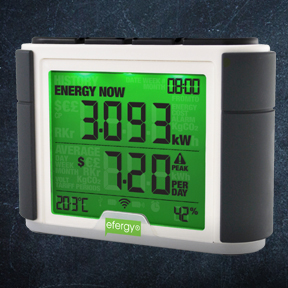How electricity monitor displays save you money
Electricity monitors are simple devices that enable your business to measure its energy use and costs in real time.
The monitor is made up of a sensor, a transmitter and a display. The sensor is hooked up to your meter panel by an electrician. It measures how much electricity you’re using and sends that data via the transmitter to the display, where you’ll see how much energy is being used and how much it’s costing you.
It can also identify equipment that should be turned off and can monitor for energy spikes caused by inefficient or malfunctioning equipment.
Low cost electricity monitor displays cost from $70–$130. Available brands include Efergy, Belkin, Watts Clever, Current Cost, Owl and the Saveometer. These devices are particularly useful for businesses that don’t have ‘smart’ meters.
Ways to get the most out of an electricity monitor display
- The first time you use an electricity monitor display, wait till the end of the day, turn off all non-essential equipment and then make a note of the display reading. This reading is what you will aim to return to at the end of every business day. If your reading is subsequently higher than this, it could mean that equipment has been left on or is malfunctioning.
- The displays can be portable, so by walking around and turning equipment on and off, you can identify energy ‘hot spots’ in your business.
- Put your energy display in a high-traffic area. This will make your staff more aware of the energy being used by the business.
- Assign one person to monitor your energy display and report on it at meetings. This information can also be emailed to your staff.
Fitness First, NSW
As part of its major drive towards energy efficiency, Fitness First employed Knowledge Global’s reporting platform, ‘NRG Insight’, to measure and report on the reduction in their energy consumption.
Before the project started, a consumption baseline was established for 37 sites, using data obtained from the last 5 years of monthly electricity bills. This baseline has enabled them to better measure their energy savings – to date they have reduced their usage in excess of 5,000Mwh per year (a reduction of approximately 14%).[1]


